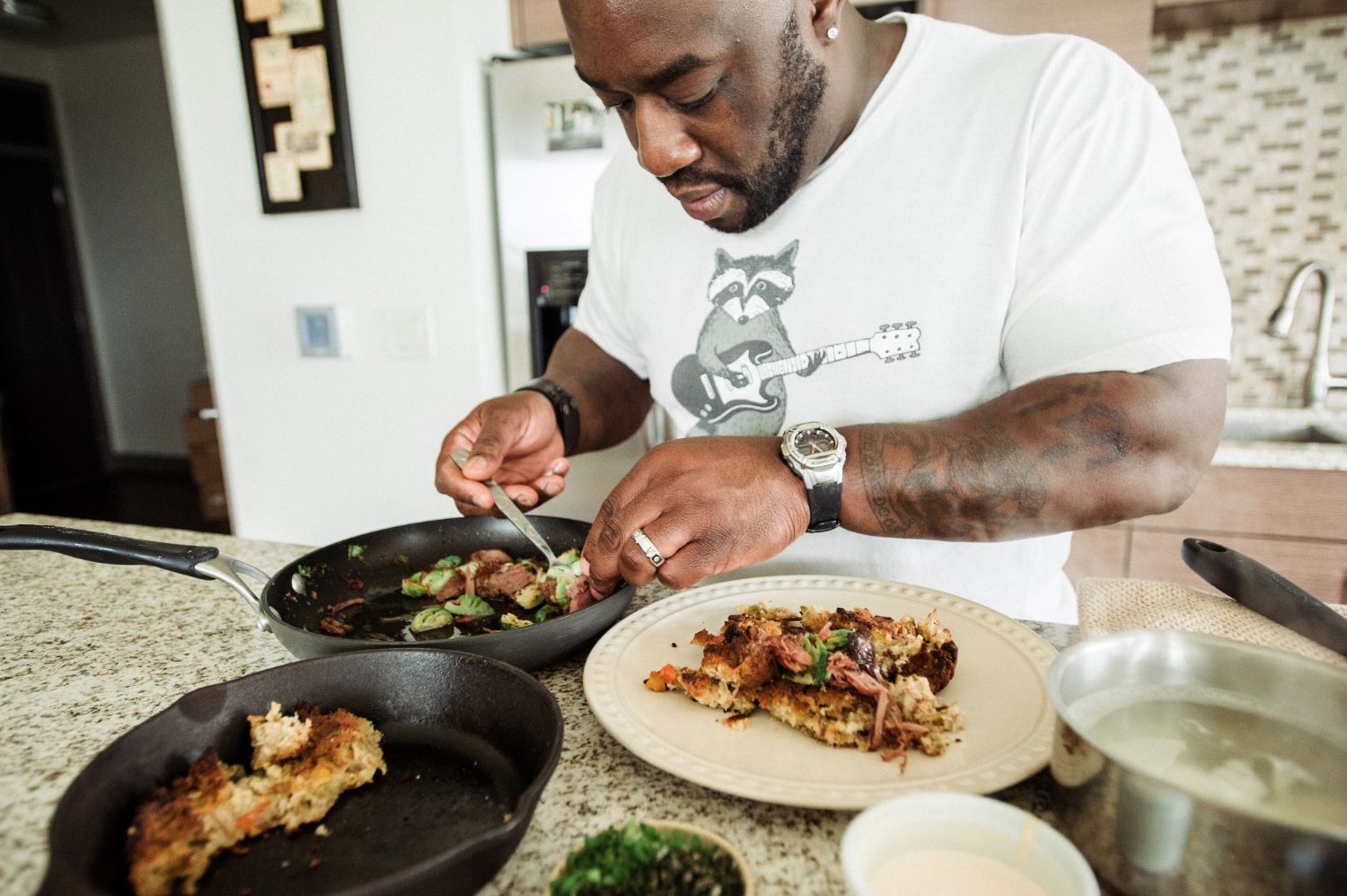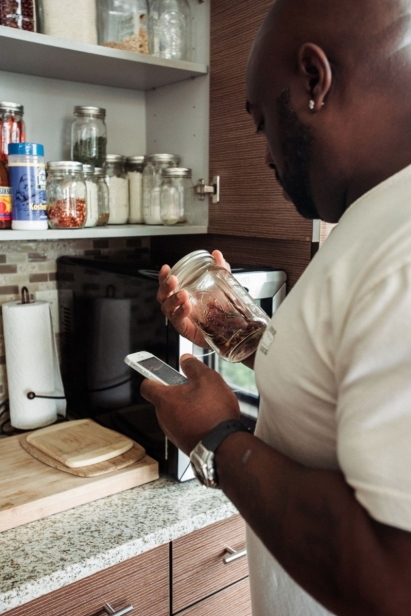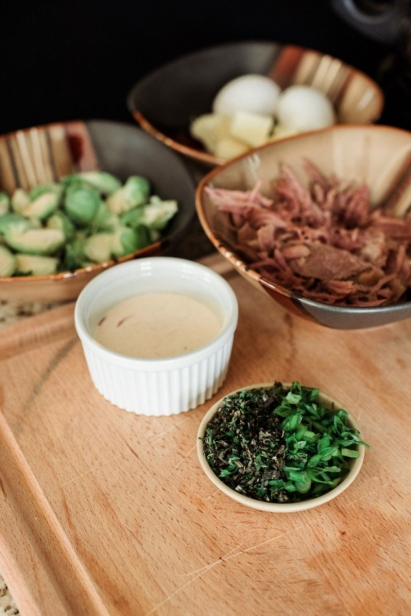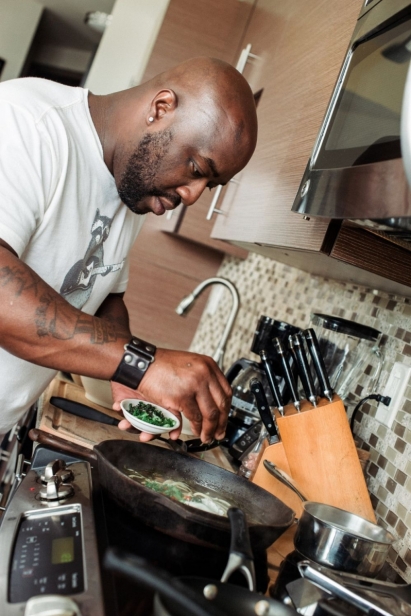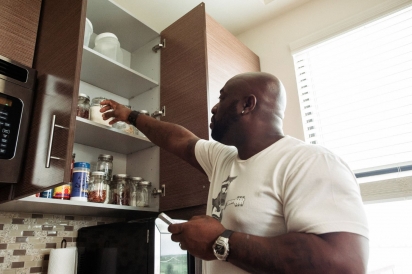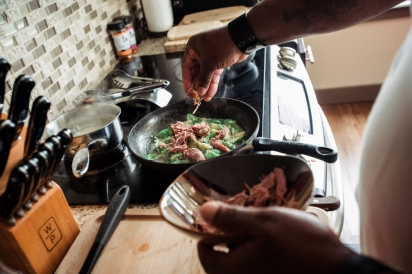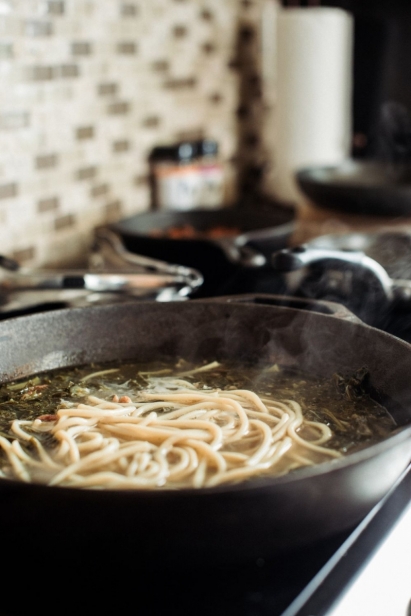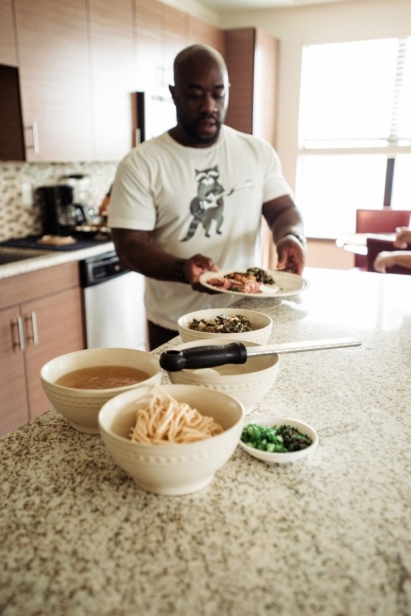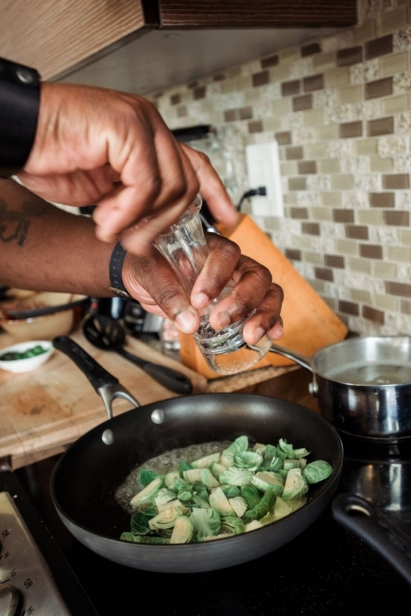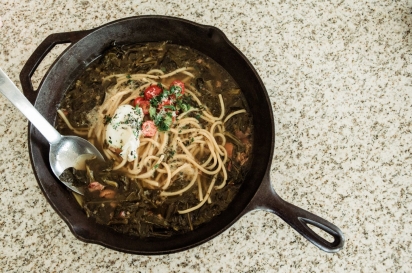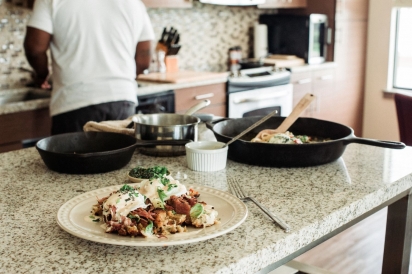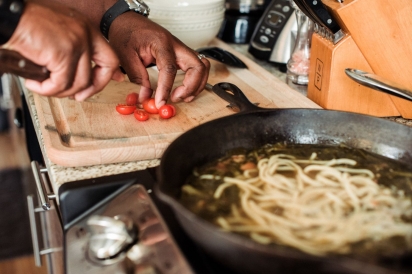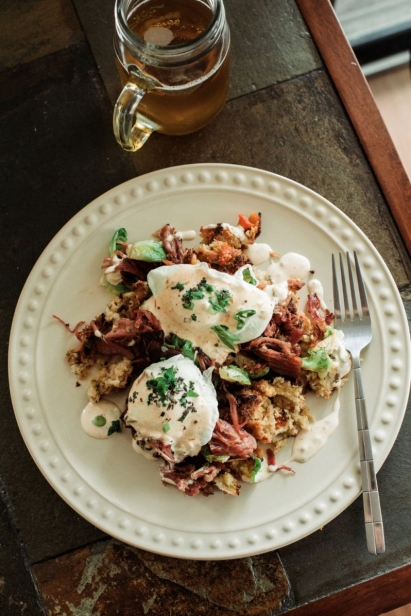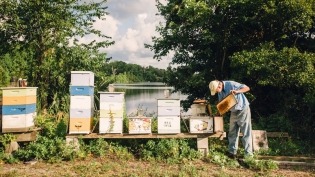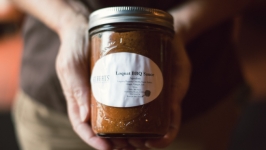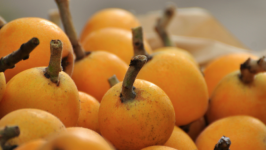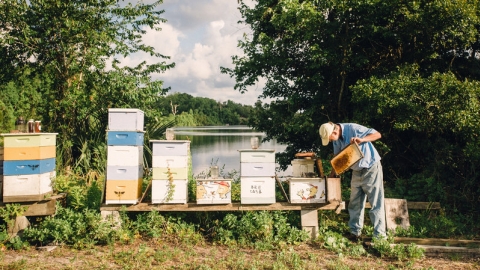Wipe Out Waste
The last time I went to bake a pie, I found an embarrassing number of cinnamon canisters in my spice cabinet. One of them, I’m sure, had gone through several moves, as it was emblazoned with a barely legible and ancient font. After I stopped feeling like a kitchen archaeologist, I regretfully chucked the desiccated cinnamon into the trash. All cooks have moments like this, as they throw away leftovers that no one had time to eat, or discover that they’ve bought something they already had.
Food waste is expensive—both economically and environmentally. Every time you throw away food, you’re wasting not only the food itself but the resources that went into growing it. If you care about your carbon footprint, you will want to reduce that waste, not just because of the massive amounts of greenhouse gasses our organic trash releases, but also because of the resources such as water, fuel and human effort that went into producing and transporting that food.
The environmental cost can feel abstract, but the cost in literal dollars might not. In the U.S., a household of four throws away from $1,300 to $2,200 worth of food every year. Reducing food waste will leave more money in your pocket.
This holiday season I’ve decided to make a priority of generating less food waste. Americans waste a whopping 31% to 40% of food from production through to the consumer, and a recent study found that most of us underestimate how much we waste. That’s because waste starts in the fields, can be found in our buying habits or during cooking and happens every time we throw out leftovers. Reducing food waste by just 15% could feed 25 million Americans. I went to the experts to find out where to start. Restaurants and food trucks have a narrow profit margin, so the most successful businesses find ways to use everything they buy. I’ve gathered some tips from Northeast Florida chefs on how you can cut down on food waste during the holidays.
START WITH THE RECIPE AND KNOW YOUR INVENTORY
Although you can apply this to all your cooking, when it comes to major holiday meals, starting with a recipe rather than shopping before you know what you’ll be doing is a definite must. Once you know your ingredients for all your recipes, list them and then “go shopping” in your own cabinets. This reduces waste because you don’t buy things you already have, and unlike me, you won’t end up with museum-quality cinnamon in the back of your cabinet. It’s the method used by Chef Kenny Gilbert of Gilbert’s Underground Kitchen in Fernandina Beach.
“I always make a full-on master list of everything that I will need in order to prepare my meals. I won’t leave anything out, right down to the salt and pepper. Then I will do an inventory of what is in my pantry and cooler. Super important. Once I determine what I actually have, I will cross off the items from my list.”
He organizes the list by food groups, basing it on where it might be grouped in the store by listing all produce and vegetables together, then dairy, proteins and dry goods. This cuts down on zigzagging around the store, which saves time and helps keep you focused on your list.
UNDERSTAND PORTION SIZING
Knowing how much to serve is a tricky thing to balance. On the one hand, I don’t want to be the host that runs out of a popular dish, but on the other, the best way to wipe out waste is to eliminate leftovers by taking into account exactly how much of everything should be required per person. You can manage portioning by plating each dish yourself, with the appropriate amounts, then leave the rest out for seconds if there’s any left. That way everyone gets a taste of everything.
Ideally,” says Chef Gilbert “a balanced meal would be six ounces of protein, two and a half ounces of veggies, two and a half ounces of starch and one ounce of sauce.”
Using those numbers as a template, you can multiply that by your number of guests. For holiday meals, I plan to be doling out everything but gravy and the turkey, cutting what folks ask for off the bird and letting them serve their own gravy.
GO FRESH AND GO LOCAL
Andrés Guardiola of St. Augustine’s Crave Food Truck recommends using local farmers’ markets whenever possible. Says Guardiola, “A lot of times you’re buying stuff that’s been picked weeks before and by the time it’s on the shelf it’s got one or two days until it goes bad. Try to get everything as fresh as you can so that it lasts longer.”
In the case of local veggies, you’ll be shopping for what’s available, so you might need to be more flexible about your recipe and list, using your portion knowledge to calculate how much you’ll need per person.
CROSS-UTILIZE WHOLE INGREDIENTS
Before your big holiday dinner even gets to the plate, waste happens as you cook. Peter Kenney, chef/owner of Purple Olive in St. Augustine, says that they look to use everything: “vegetable scraps for stocks and soups” and “unused bread for breadcrumbs and bread puddings.”
Sometimes, I’m forced to buy more than a recipe calls for—a bunch of carrots when the recipe only calls for one or two. In this case, it’s a great idea to look for a way to incorporate that ingredient in more than one dish, in stock or as part of your leftover strategy. Also, look at the whole product and find ways to use what you would normally discard during the cooking process. Consider how you’ll use the entire vegetable or bird.
“We look at whole products so that we have use of things like fennel bulb fronds. We cut down whole meats and use all of the product in various ways,” says Chef Kenney.
Making stock is one of the best ways to use everything, particularly the bits you’d normally discard. Freeze the stock in ice cube trays, then put them in freezer bags for small-portioned stock anytime you need it. It keeps for about a month in the freezer. Chef Ian Lynch of Jacksonville’s Bistro Aix makes turkey stock by using the turkey carcass stripped of any meat and then “adding leftover vegetables, any herbs and water.” After simmering for some hours, he adds veggies, turkey meat and cream to create a soup.
“There are so many ways to utilize different ingredients and that is the fun part about being creative in the kitchen,” says Chef Lynch.
SHOP OFTEN
It seems counterintuitive to reduce waste by shopping more often, but I’ve found that rather than stockpiling at a big-box store for a meal I may or may not ever cook, shopping for the meal that I absolutely know I’ll be cooking that evening means fresher produce and less waste. Chefs at restaurants also use this strategy. Chef Lynch says that they “order daily on an as-needed basis to ensure the best quality.” Keeping this philosophy in mind is especially helpful when resisting the urge to be lured in by the thought of a super deal.
In a study at the University of Arizona, findings suggested that for home cooks, shopping too far ahead ultimately results in more food being thrown away. While you could meticulously plan every meal for the next month, for most people, especially around the holidays, that’s not a practical solution, as life intervenes: You aren’t in the mood for the meal you planned, or you get a dinner invite or traffic keeps you from getting home on time and everyone’s too starved to wait for you to fix a meal. When plans change, what you’ve bought in advance tends to be wasted. As long as you stick to your list or focus on simply shopping for your next or next few meals rather than far in advance, you’ll probably waste less.
SUPPORT UGLY PRODUCE
Food waste in the U.S. starts long before you scrape your leftovers into the trash. About 6 billion pounds of produce gets left in the field, often because it doesn’t meet the cosmetic standards supermarkets require. That means food gets wasted before it is even harvested. Remember: It’s what’s on the inside that counts, and what’s on the inside is delicious!
Says Guardiola, “When you grow things naturally they aren’t always uniform—cucumbers are a little bent, things aren’t symmetrical. It doesn’t matter if you’re going to chop it up anyway.”
For the home consumers, by buying produce marketed as “ugly” you send a message to the store that there is a demand, even for the not-so-pretty fruits and vegetables at the supermarket. Ask stores for more ugly produce and look for online communities and petitions.
STRATEGIZE FOR LEFTOVERS
In a restaurant, chefs strive not to have any leftovers at all, but all the chefs I spoke to actually enjoy strategizing for leftovers at home. Don’t skip over breakfast, either. Guardiola thinks breakfast is one of the easiest meals to use leftovers in because of the versatility of omelets.
“Maybe you’re not going to use an entire red pepper or butternut squash, but the next morning put all that into an omelet,” he says. Chef Kenney of the Purple Olive recommends using leftovers to make “a filling for pastry, empanadas or spring rolls.”
Today there are millions of people in this country who are food insecure, meaning that they often don’t have enough to eat. I hope to waste less so that I can give more. My leftovers certainly won’t feed the hungry, but maybe the extra dollars I save can be used to help a local food bank in need. After all, the holiday season is about what you can give, not what you can waste.
For other suggestions on reducing food waste, pick up the recently-released Waste-Free Kitchen Handbook by Dana Gunders, a food-waste expert at the Natural Resources Defense Council.


